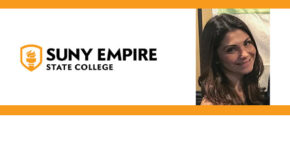 We have many ways to present information for students in today’s world.
We have many ways to present information for students in today’s world.
Melissa Wells, assistant professor in the department of education studies at SUNY Empire State College, discusses why different students may need different learning techniques.
Melissa Wells is an Assistant Professor at SUNY Empire State College in the Educational Studies Department. She is an online professor and Subject Matter Expert in special education coursework at Liberty University. Prior to her work in Higher Education, Melissa was a special educator in the New York City Department of Education. She currently resides in New York City with her husband and three young children.
The Prevalence of UDL Techniques in Virtual Formats
College students are more diverse in race, ethnicity, and ability than ever before. It is imperative that higher education is aware of the needs of incoming students and has a plan and a guiding framework to ensure that all students are provided the supports they need to achieve the high standards of the learning institution. Universal Design for Learning or UDL, is a scientifically validated framework aimed at increasing the learning experience for individuals, by offering flexibility in the way information is presented, in the way students and educators are engaged, and in the modes in which students and educators can respond or demonstrate learning. Thus, there is an increased urgency for implementation and the scaling up of UDL in higher education. To best support diverse learners, this research asks the questions: what is the student-reported prevalence of UDL techniques in Higher Education in various learning modes (independent study, online course, virtual study group); and which mode of learning demonstrates the highest UDL techniques compliance? Student perceptions of UDL techniques in their various modes of studies were gathered and analyzed for the highest UDL usage and compliance to inform future practices in higher education.
Based on a survey sent to undergraduate students, compliance for UDL techniques is most prevalent in Virtual Study groups, however, this mode is the least frequently utilized mode of study. Online courses lead the pack in providing clear guidelines and/or evaluation rubrics for all major course assignments (how assignments are structured, submitted, and graded. While independent studies are best at providing a course syllabus that identifies all course requirements, course expectations, and due dates. Qualitative data, collected through open-ended questions, suggest that flexibility in scheduling, relationships with the professor, and clear and specific assignment expectations and feedback create the most successful environments for higher education learners.
Read More:

Comments
4 responses to “Melissa Wells, Empire State College – The Prevalence of UDL Techniques in Virtual Formats”